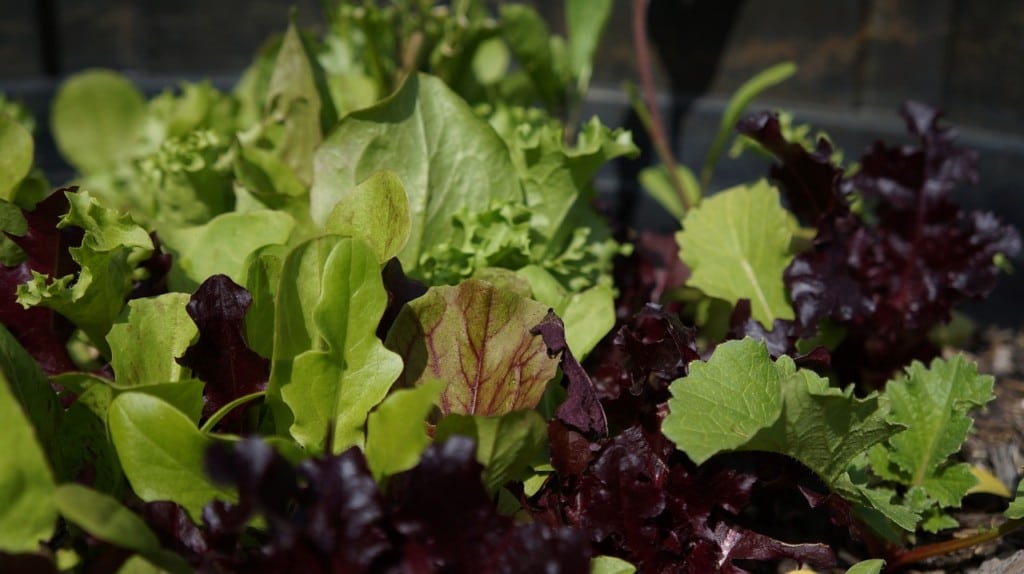
A garden provides us with a place to learn, a place to lose oneself and a place to create. There are no gardening mistakes, only experiments according to a Greek proverb.
As more of us turn to gardening in our backyards by way of raised beds, containers and on apartment balconies, we share the same desire to grow the food that we consume. And for good reason. Since the 1940s there has been a steady decline in the nutritional value of produce.
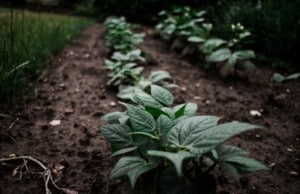
Commercially grown produce today has significantly less minerals, vitamins and protein than vegetables grown a century ago. Once harvested, produce begins to lose moisture and nutrients.
Growing your own vegetables provides food at peak ripeness with nutritional value as well as:
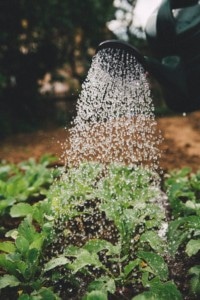
You don’t need a green thumb to grow vegetables. Start with these five basic steps in mind:
Vegetables need sun and space to grow.
Choose cut-and-come-again plants.
Mix in compost and natural fertilizers to condition the soil.
Plants ripen at different times. Sow seeds at varied intervals to stager harvest.
Gently water plants using a gentle, rain-like mist setting on the garden hose or watering can.
As your plants start to grow, keep the weeds at bay and remove crowded seedlings. Your garden centre can best advise you on how often and what type of fertilizer is best for growing vegetables and how to use it.
If space is a challenge, then head on over to Art’s Nursery and check out their demo gardens. They’ve created 4 small space garden ideas that will fit into 6’x6′ or less!” Check their upcoming gardening workshops and consider sign up for their free Small space vegetable garden workshop on May 6.
Not all plants grow equally, so we recommend choosing vegetables that require the least amount of time and effort. Some easy growers include radish, lettuce, carrots, cucumbers and beans.
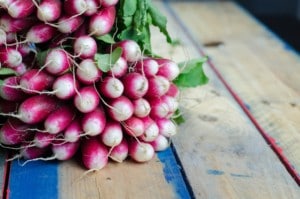
RADISHES
In a mere 20 days, radishes reach full size. This quick-growing vegetable can be grown all season long by sowing more seed after each harvest. Use them as appetizers, snacks and side dishes. A must for every beginner’s garden!
LETTUCE
By growing lettuce, and other salad greens, you can easily grow a simple salad right in your backyard. Best of all, lettuce is a fast grower and takes up little room. Simply snip the tops off your lettuce greens and the plant will continue to grow. Lettuce grows well in containers and can be planted under taller plants.
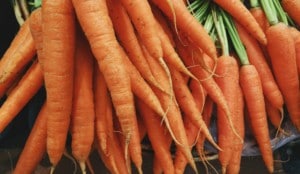 CARROTS
CARROTS
Plant carrots early in the spring. This hardy root vegetable is easy to grow and can stay in the soil until fall. Although carrots prefer full sun, they can tolerate light shade. Pull at will throughout the growing season to enjoy the sweet taste of a baby carrot.
CUCUMBERS
Cucumbers are prolific and grow like weeds if you provide them with water and support for climbing. They are perfect candidates for containers.
GREEN BEANS
Beans are typically easy to grow from seeds and come in many types of varieties. They prefer full sun and well-drained soil.
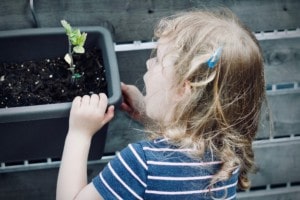 Kids can see the magic in gardening when a tiny seed turns into something they can eat. Their natural curiosity makes them great gardeners and the experience of working in the soil brings them in touch with nature.
Kids can see the magic in gardening when a tiny seed turns into something they can eat. Their natural curiosity makes them great gardeners and the experience of working in the soil brings them in touch with nature.
It’s important for kids to see where our food comes and to have the opportunity to get their hands dirty. Many children have no idea that vegetables come from the soil, how produce grows or what it feels like to pull a vegetable from the ground. By learning how to nurture plants, children learn stewardship and develop ownership.
“Why do potatoes make good detectives?
Because they keep their eyes peeled.”
The freshness of vegetables from the grocery store is out of your control. When your produce travels thousands of miles, often over several days, how fresh is it? By growing your own fruits and vegetables, you control the growing environment along with the freshness and nutritional value of your food.
We hope we inspired you to start your own vegetable garden. Visit your gardencenter to see what seeds and seedlings they have ready to grow now. Check out our contest with Art’s Nursery for a chance to Win A Vegetable Garden Starter Package.
Order fresh sod now or request a custom quote for your project.
Save with a Yearly membership. Custom fertilizer program. Fertilizer, topsoil, seed delivered to your door before you need it. Don’t forget, we will remember for you!
Western Turf Farms Abbotsford
39183 No.5 Road Abbotsford, BC V3G 2G3
Western Turf Farms Langley
7880 240 Street Langley, BC V1M 3P9
© Copyright 2025, all rights reserved by Western Turf Farms. By using our website you agree to our Disclaimer and Privacy Policy.